Pon Ye Gyi: Myanmar’s Fermented Bean Paste Tradition
Apr 14,2022
Pon Ye Gyi: Myanmar’s Fermented Bean Paste Tradition
Apr 14,2022
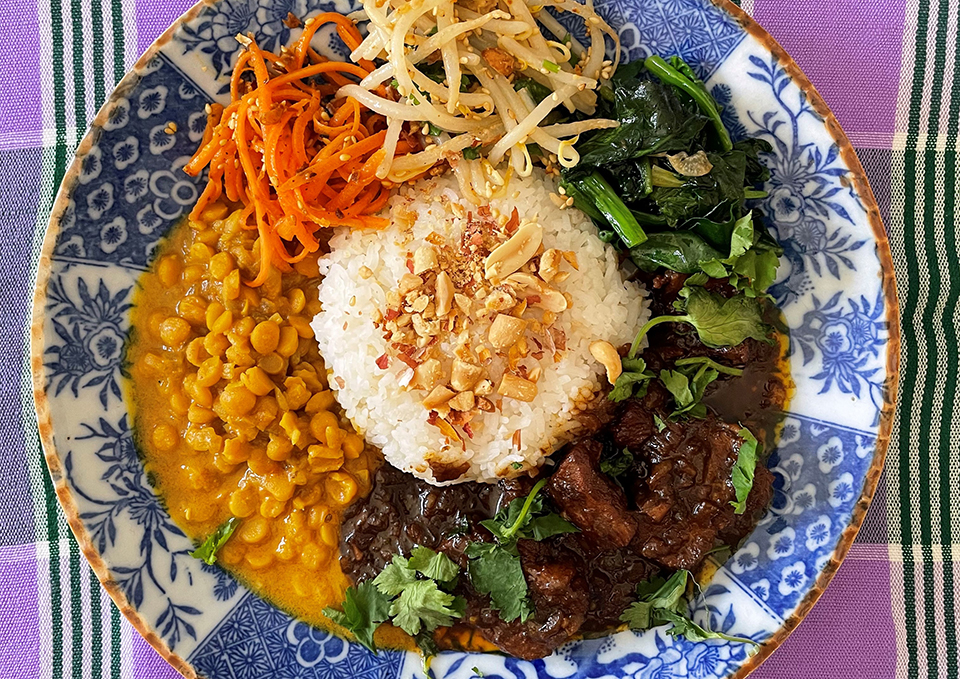

One thing that’s now all the rage among hardcore Asian food aficionados and curry lovers in Japan is Burmese cuisine. Restaurants run by people from Myanmar are popping up all over the Takadanobaba and Ikebukuro neighborhoods of Tokyo. And they’re winning over fans in droves with their great food.
Burmese food expert Suzuki Lapheko is fascinated by Burmese cuisine and has been busy investigating it. She shared with us her knowledge of Myanmar’s little-known fermented foods and culinary traditions.
Lapheko first encountered Burmese cuisine at a restaurant in Takadanobaba, a neighborhood of Tokyo nicknamed Little Yangon. Later, in Chiang Mai, Thailand, she tried Shan cuisine — the ethnic cuisine of Shan State in Myanmar — and she says she will never forget how good it tasted. Around 2018, she began exploring the subject of Burmese cuisine.
“I’ve always been Internet-savvy, so I did most of my research online. But I couldn’t find as much information about Burmese cuisine as I’d hoped. It was like constantly trying to unravel a mystery.”
Lapheko kept on with her research while frequenting Burmese restaurants and food stores in Japan. She even visited Myanmar itself. As her knowledge grew, she came to appreciate the amazing diversity of Burmese cuisine. The country has many ethnic groups, each with its own distinctive food culture.
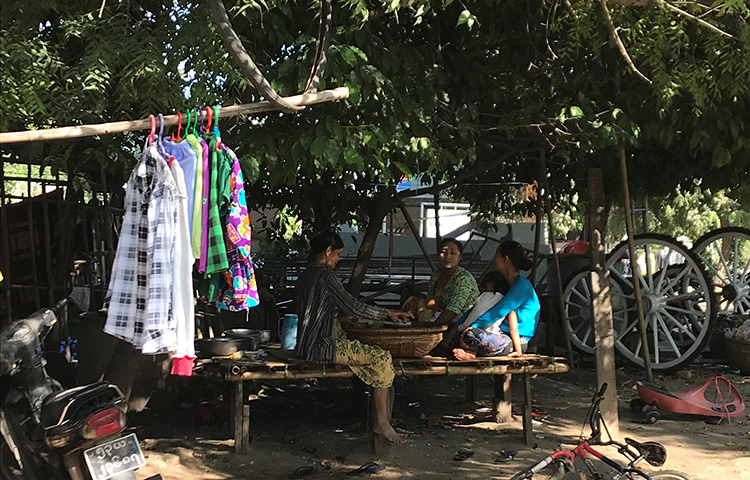
“It isn’t just the food. Myanmar’s quaint, nostalgic air is part of the country’s charm,” says Lapheko.
“The people of Kachin State, for example, think of their food as Kachin cuisine, while the people of Shan State think of their food as Shan cuisine. There’s an aversion to lumping it all together as ‘Burmese cuisine.’ Even within Shan State, say, the food of Lashio in the north possesses different characteristics from that of Taunggyi in the south. Thus Shan khao swe, a noodle dish originating in Shan State, is popular all across Myanmar, but the recipe differs depending on who you ask.”
This helps explain why there are still few information sources encompassing Burmese cuisine in its entirety.
“Being Japanese, I’m able to take a bird’s-eye view of Myanmar’s food culture. I’m also able to study and synthesize it from an objective standpoint. I want to capitalize on those advantages.”
For this feature, Lapheko told us about the fermented black bean paste pon yay gyi, a fermented seasoning made around Bagan in Mandalay Region in the center of the country. It’s widely eaten across Myanmar.
This sour seasoning is made by boiling horse gram beans — known as a superfood because of their high nutritional value — into a paste and then fermenting it.
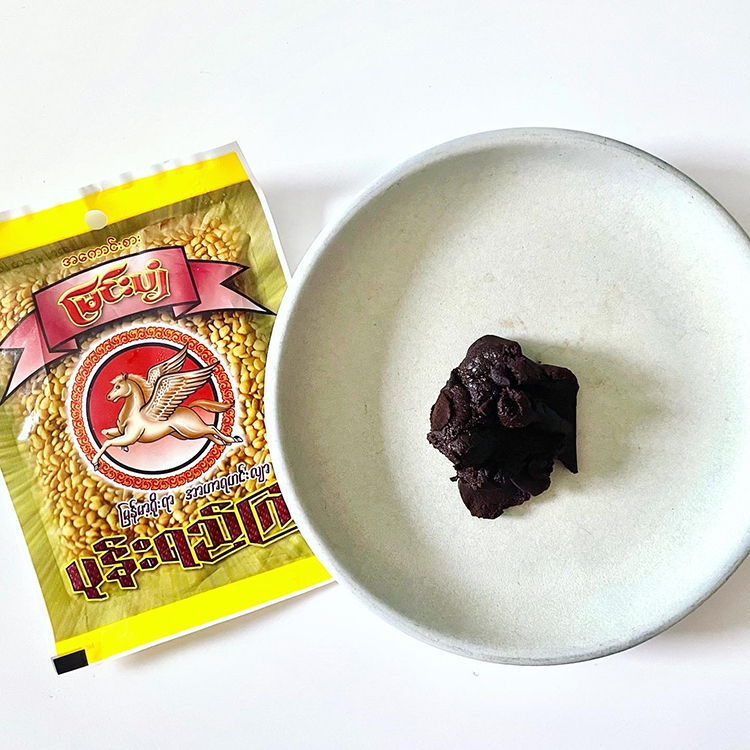
Pon yay gyi made with horse gram
“Because it’s a fermented bean paste, you might imagine it’s something like Japanese miso, but it contains hardly any salt. Sourness is the dominant note. I was so interested in knowing how it was produced that I even visited a factory in Nyaung-U, the next town over from Bagan.”
Lapheko didn’t bother to hire a guide. She tracked down the pon yay gyi factory on her own and showed up unannounced to observe the production process.
“I rented an e-bike and pedaled all over town map in hand repeating the words ‘Pon yay gyi? Pon yay gyi?’ to the locals. And eventually I found the factory.”
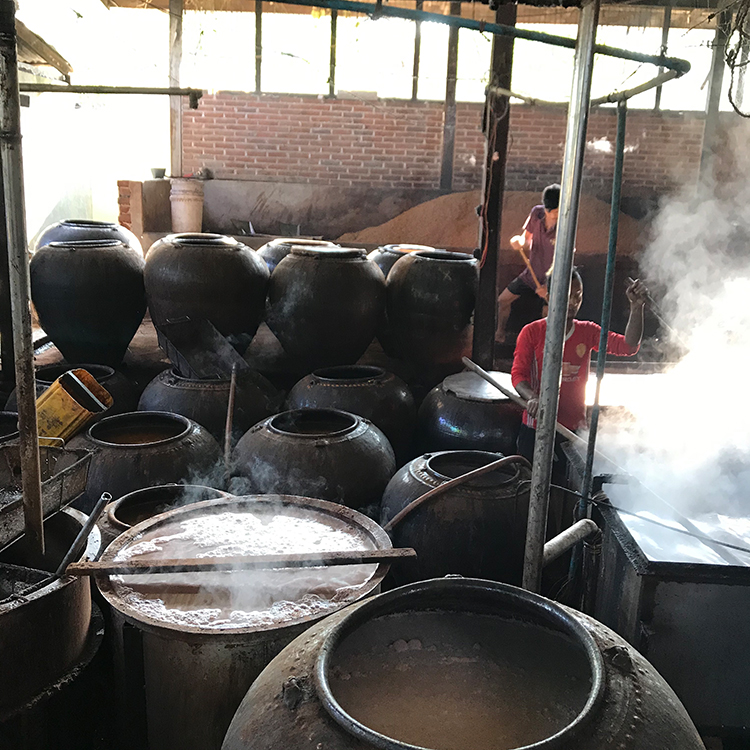
A pon yay gyi factory. Some factories are even smaller than this.
Lapheko observed the entire production process. Boiled horse gram was made into a smooth paste similar to Japanese koshian (strained red bean paste). To this was added the liquid in which the beans had been boiled, along with some pon yay gyi from a previous batch as a starter. The mixture was then fermented in jars. Finally, it was boiled down. Having paid careful attention, Lapheko tried making her own pon yay gyi on her return to Japan,
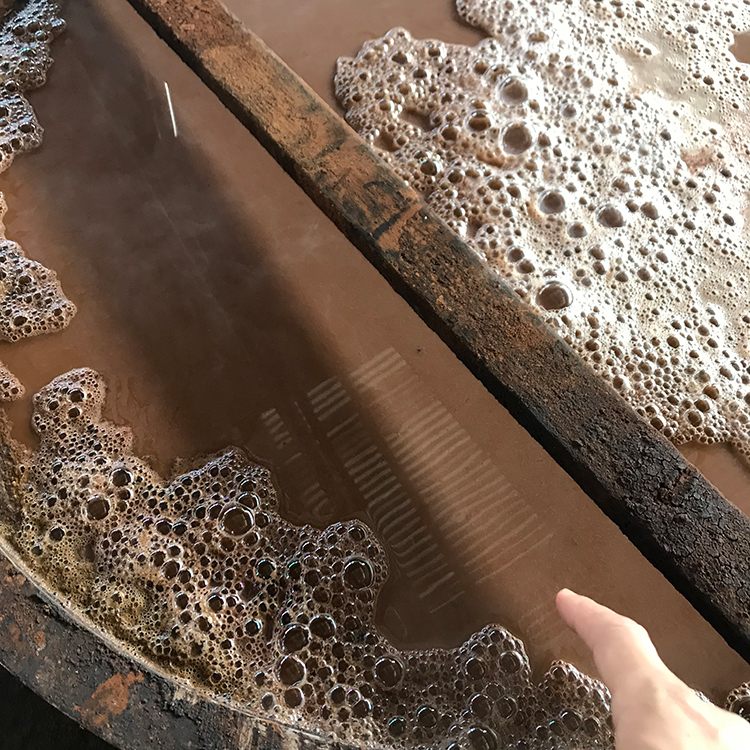
The liquid in which the beans have been boiled is strained and poured into a large jar for fermenting.
“The pon yay gyi I made myself didn’t taste as sour as that from the factory in Nyaung-U. That may be because of the temperature difference between Japan and Myanmar. The stuff I bought at a Burmese grocery in Takadanobaba was about as sour as what I’d made myself, so I guess pon yay gyi must come in two levels of sourness, strong and mild.”
Pon yay gyi is used for seasoning rice mixed with other ingredients and eaten as a side dish like a salad. What Lapheko most recommends with pon yay gyi, however, is pork curry.
“This curry has the rich, full flavor characteristic of pulses, but it’s not like miso curry or that type of thing. I suppose it tastes more like pork vindaloo” — a well-known dish from the state of Goa in India made with vinegar. “Pairing fatty ingredients such as pork with something sour tasting is a typical pattern in Burmese cuisine. This dish is a case in point.”
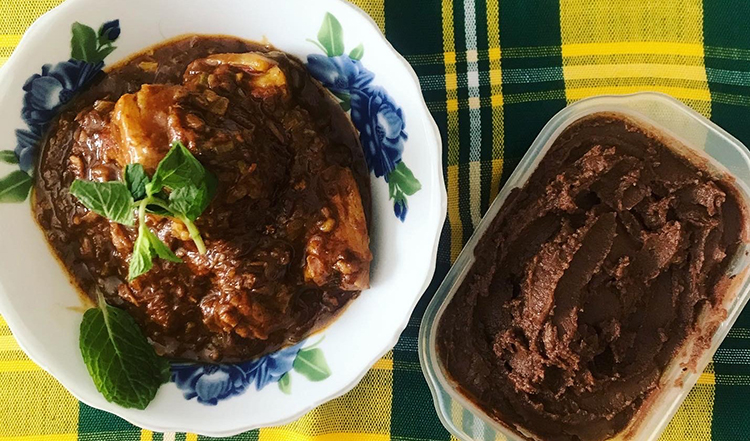
Lapheko’s homemade pork curry with pon yay gyi
Lapheko has a successful career as a culinary professional, but you can’t help wondering about her unusual name. In fact, it’s derived from a Burmese fermented food.
“Lapheko comes from laphet so, Burmese fermented tea leaves that you eat. I intend to spend the rest of my life studying Burmese cuisine, and a friend gave me this name as a sobriquet that will still suit me once I get older. I’m also very fond of laphet thoke, a salad made with laphet so.”
Here’s how Lapheko describes her stance as a food expert.
“I call myself a Burmese food expert, but right now I’m still a work in progress. The typical food expert doesn’t claim that title until they’ve completely mastered a particular cuisine, but in my case, I make a point of sharing information as soon as I gather it. That’s because I feel that if I wait until I’m a full-fledged expert, the information that people need will end up gathering dust. Maybe I’m a bit of a maverick, because that’s not the way experts generally go about things.”
Lapheko shares what she’s learned via her own website, through events and workshops held in rented space, and by giving cooking classes.
“At my events, I showcase the attractions of Burmese cuisine by offering my own interpretations of it while paying tribute to Burmese restaurants in Tokyo. For example, I once held a lunch event dedicated to sour and spicy Burmese dishes. The main dish was chin baung kyaw or stir-fried roselle leaves, which are very sour indeed.”
And then there are her online cooking classes. The participants are sent some of the ingredients in advance. Then, on the day of the class, they prepare an actual meal in real time under Lapheko’s guidance. All the participants make two to three servings of several dishes. “I suppose it requires considerable concentration,” Lapheko says, “even if it is an online cooking class.”
Her next goal is to publish her own cookbook. She also wants to get people in Japan associating Burmese food with a signature dish, much as Japanese instantly think of gapao at the mention of Thai cuisine.
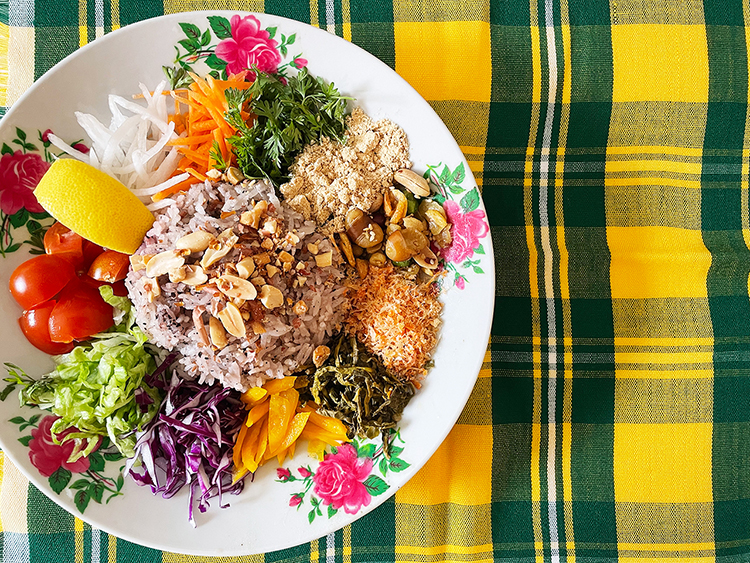
Laphet htamin, a dish that Lapheko particularly recommends. It’s made by mixing Burmese fermented tea leaves (laphet so) and rice (htamin).
“Kyet thar hin or Burmese chicken curry is now familiar in Japan, but I wish more people knew about laphet so, or fermented tea leaves, and laphet htamin, a rice salad made with fried beans and vegetables. Myanmar has a culture of mixing ingredients by hand, and it’s beautiful to watch. I’d like to see Burmese cuisine become more accessible. And of course, I want to get to Myanmar again. When it wasn’t practical to travel there because of the Covid pandemic and the coup, all I could do was keep busy in Japan. Now I’m looking forward to traveling through every state in Myanmar to check the results of my research and see how much I’ve gotten right.”

Burmese food expert
Burmese food expert
Suzuki Lapheko shares content about Burmese food on her website, a casual, friendly guide to the subject. She also offers cooking classes and holds workshops and Burmese food events. She wrote the introduction to Burmese food for the Japanese-language guidebook Walking the World: 244 Countries and Regions, 2021-2022 (published by Gakken Plus).
Burmese Tokyo, the Burmese Food Information Site (in Japanese only)